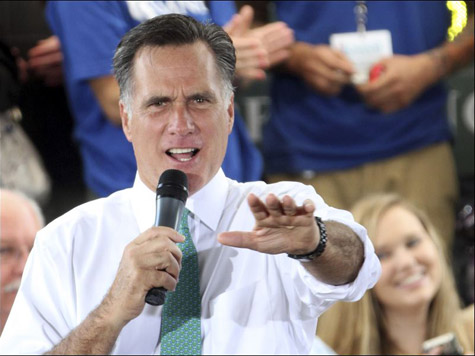With the news that former Republican presidential nominee Mitt Romney plans to return to the national debate, it is worth looking back on his rather mixed contributions during the 2012 election cycle.
The media focused obsessively on Romney’s so-called “gaffes” to the exclusion of almost anything that President Barack Obama had done wrong, great or small. But there was a kernel of truth in the critique.
The gaffe that set Obama’s watchdogs baying was Romney’s comment about London’s security lapses in the run-up to the 2012 Olympics–in response to persistent questioning from Brian Williams of NBC.
Romney’s comment evoked opportunistic attacks from British politicians, which seemed, to the U.S. media, self-evident proof that he could not be trusted with foreign affairs (as if Obama had never insulted an ally.)
Then, in Jerusalem, Romney made an accurate observation about cultural differences between Israel and the Palestinians, and the media yowled again, as if appeasement had become a necessary presidential job skill.
These were not gaffes, at least not in the way the media understood them. They did not reveal an inability to handle foreign affairs. But they did reveal something telling–and overlooked–about his management style.
What that was, precisely, was revealed in another–and more consequential–gaffe: Romney’s infamous “47 percent” comment, referring to the percentage of Americans who pay no federal income taxes.
Romney suggested to donors that the “47 percent” would be less likely to vote for him as a result, and that his efforts would focus on the other 53 percent of Americans, who had more of a stake in reform, he implied.
The left pounced on the remark as if it were evidence that Romney did not care about the poor–a claim that was contradicted by Romney’s entire life story (which he seemed curiously uninterested in sharing widely).
In fact, the “47 percent” remark revealed a different weakness: a management style that preferred straight talk to smooth talk, that favored instructing over listening, that chose directing over consensus-building.
It was the kind of style that made Romney successful as a CEO and allowed him to set himself apart from other Republicans in liberal Massachusetts. It was not one that lent itself to leadership on a national scale.
It was also a management style that led to the Romney campaign’s most embarrassing failure: namely, the complete breakdown of the get-out-the-vote effort even as Romney and senior aides were predicting a win.
It turned out that the Obama campaign not only had better technology but also had a better connection with the key voting blocs necessary for victory in swing states, even as it gave back some of Obama’s 2008 gains.
Some of that technological edge has been ascribed to an ironic cultural difference between the parties, where Republicans favor top-down operations while Democrats embrace a free-market approach with vendors.
That difference probably reflects history more than philosophy, as the Democratic grass-roots rejected and then took over the party machinery during the Bush years–a feat the conservative base has not matched.
Yet with Romney, it matched the same flaws revealed in his “gaffes”–the attitude that he knew better than others, which left dangerous gaps in his knowledge and cost him the support of potential allies.
Romney’s return to the political arena is welcome, but the Republican Party would do well to learn from his mistakes. If the recent “autopsy“–a top-down debacle, start-to-finish–is any guide, it has a long way to go.

COMMENTS
Please let us know if you're having issues with commenting.